I'll start with the top swale, and work my way down...
Pond dug in middle of a long swale
to hold water for longer
This is probably the first swale we ever dug, to divert water coming off the street, away from the house. We made a deep pond which once had pigeon peas around it. The falling leaves helped to seal the pond. While the rest of the swale drains pretty quickly, the water in the pond stays around for up to a week or more afterwards, depending on evaporation.
The middle swale, on the same level as the house, also captures and directs any excess water away from it. The pigeon peas are planted above the retaining wall and their falling leaves have helped seal this swale too, so it holds water for several days after a rain event.
Both the top swale and middle swale are not connected, but the middle swale overflows to the new swale I dug, lower down the slope.
Full
This is the swale full of water now. The level was spot on and it didn't break its banks, before draining from the overflow. I will build a proper spillway when I've finished digging this swale, but the temporary overflow did the job of allowing the excess water to drain away, once it was full.
Overflow
This is the overflow from the swale near the mulberry tree. I was very pleased with how this swale performed, even in its early stages of development. It was a moderate rainfall though, so it needs more work if its going to cope with the heavy downpours we can get during summer.
Empty
And this is what the swale looked like after about an hour. The water seeped through the ground much quicker, because it has not been sealed in the same way the other swales have. Its located under a mulberry tree though, so its leaves should help to seal it when they fall in winter. We have also placed a lot of dried grass as mulch, over the swale too.
Mulberry tree #1 higher up the slope
Once finished, this swale will connect to another swale down the slope, and then overflow into the main lower gully. This is where all the action happens. Especially since several properties adjoining ours, don't impeded the water flow, and it comes rushing in at a fast velocity. We've built a dam out of plant debris, to slow the water and catch anything coming down stream. I found a lovely plastic cake container this time, which won't be going out to sea.
All stop
This is the dam we built - still designed to flow, it just slows the water down somewhat. If you click the image to enlarge, you can see the cake container lid, about a third of the way down, in the middle of the picture. When the water drops I'll fish it out and put it in the recycling bin. Someone upstream likes to eat cake.
You can see by the foam where the arrow is pointing, showing where the water breaks its banks. This then leads to our new project, of a pond designed to capture and store some of this seasonal overflow.
Lower gully is completely flooded
Our log bridge didn't get swept away, because the water tends to break its banks to get away first. You can see the pond is well positioned to take advantage of these flooding events. Our intention is to open up the initial entry where it first overflows (image above this one) so we can spread the water further away from the back of our house.
July 2014
Just so you know, our house is on a big slope, so we are safe from flooding, but I don't like to tempt fate with blind trust. Its better to plan for even greater downpours, than the Queensland flooding of 2011. That's why we try to manage the flows of water around our property, allowing for even greater forces to be subdued.
Back to yesterday though...
Lower gully
The rain stopped, but the lower gully continues to flow as water drains from upstream. The flooding looks widespread, but its by design. Instead of having fast flowing water, carving out a deeper crater to get away quicker, we spread the water out by impeding its flow. Less land erosion happens this way.
Our intention is to widen this space even further for water to spread out and slow down again.
Water moving slowly
This area is down stream from our pond but still on our land. Mulberry tree number two, has to endure temporary flooding. We planted it on a slightly elevated area so the water can pass around it. The water level tends to drop after about an hour.
The mulberry benefits from the temporary flooding by receiving nutrients from upstream. The tree also benefits the land, by knitting the soil together with its fibrous roots. I will be curious to know if the fruit on this tree will taste sweater than the fruit on the swale above. That's if the birds will ever allow us any fruit!
Combing the water
Once the water dropped a little more, I could see how the grass in the main channel has been swept over. Every individual blade of grass, interrupts the flow, like running water through a comb and it has the added benefit, of protecting the soil banks from erosion. This is why we let the main channel get choked-up by whatever can grow there. We don't mow it down, except for around the log bridges so we can use them safely.
Still holding
An hour after the storm had passed, I was surprised to see our newly designated pond area, was still holding water. The water had drained from the new swale by then, but this pond (we have yet to finish digging) was still holding onto its store. The puddles are where David has removed trees, or has dug around them to get access to the roots, to remove them.
This will be a natural asset to the property once completed. Make no mistake though, nature will continue to reshape this area. Its where a lot of forces meet and there's bound to be movement outside our containment areas - and possibly even in them.
I don't want to give the impression we can completely control the overflows of these gullies. Our design is based around lessening the impacts, while capturing as much of those elements on our property as possible.
To see what these areas looks like without water, go to "It all connects"

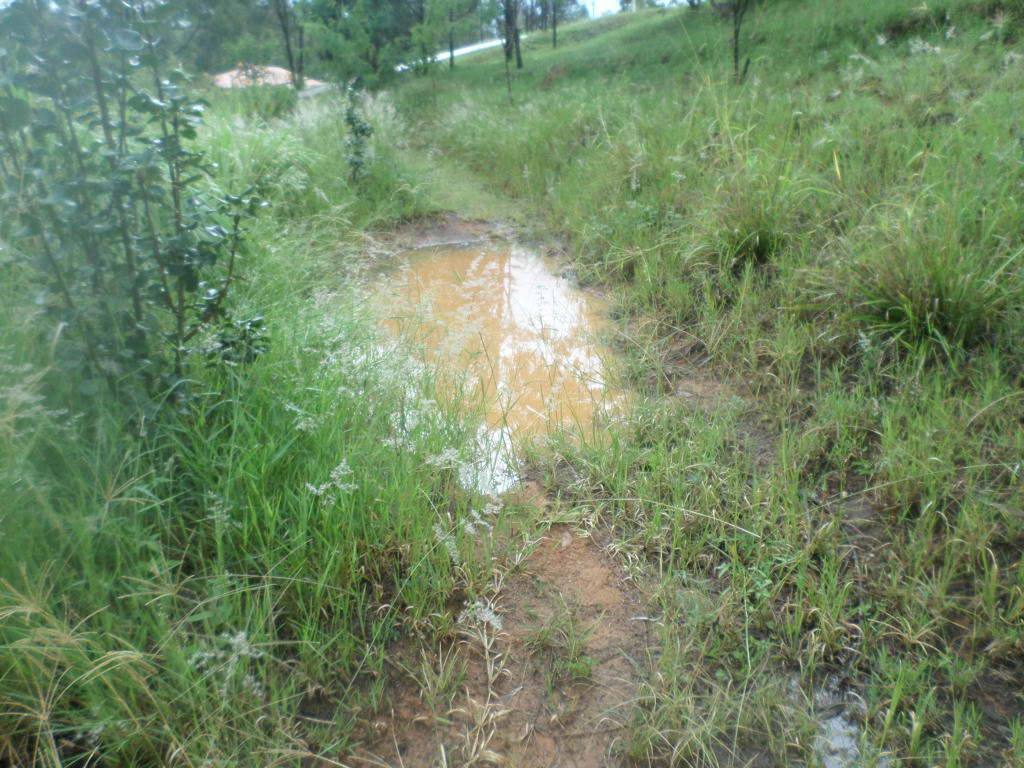
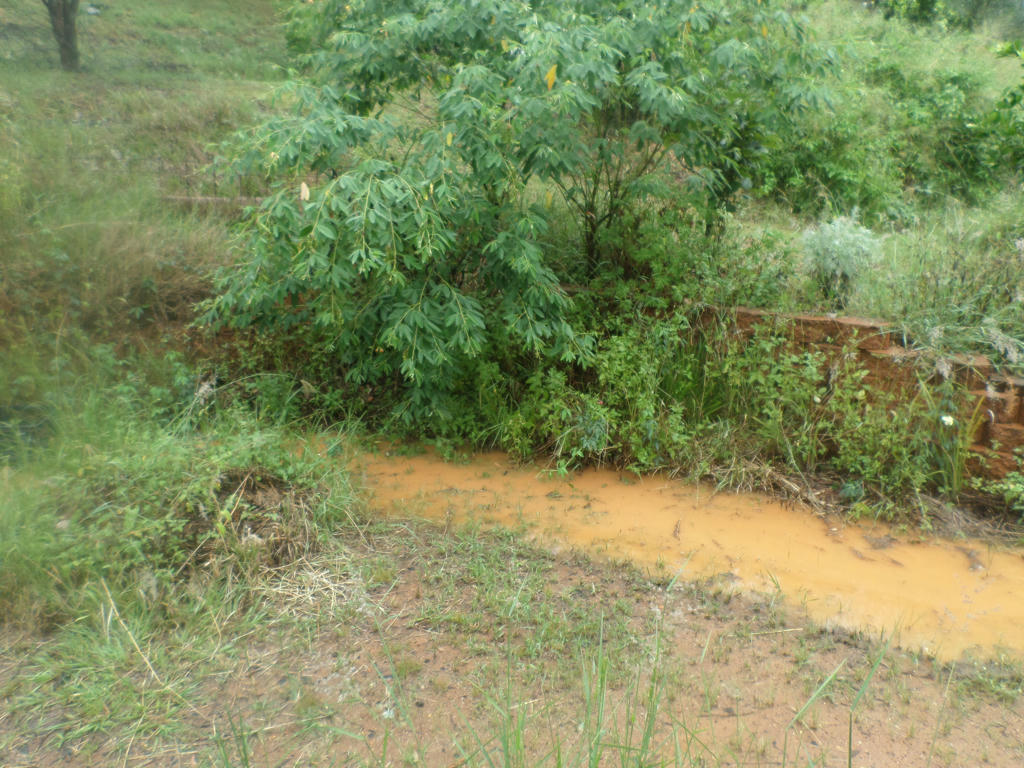
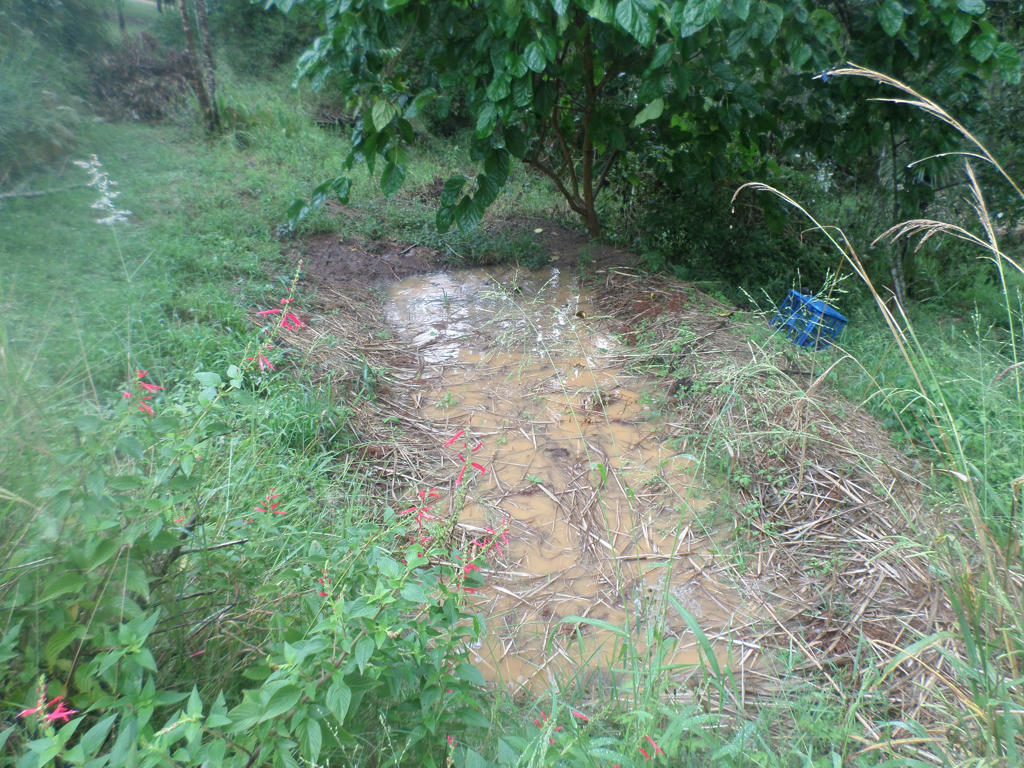
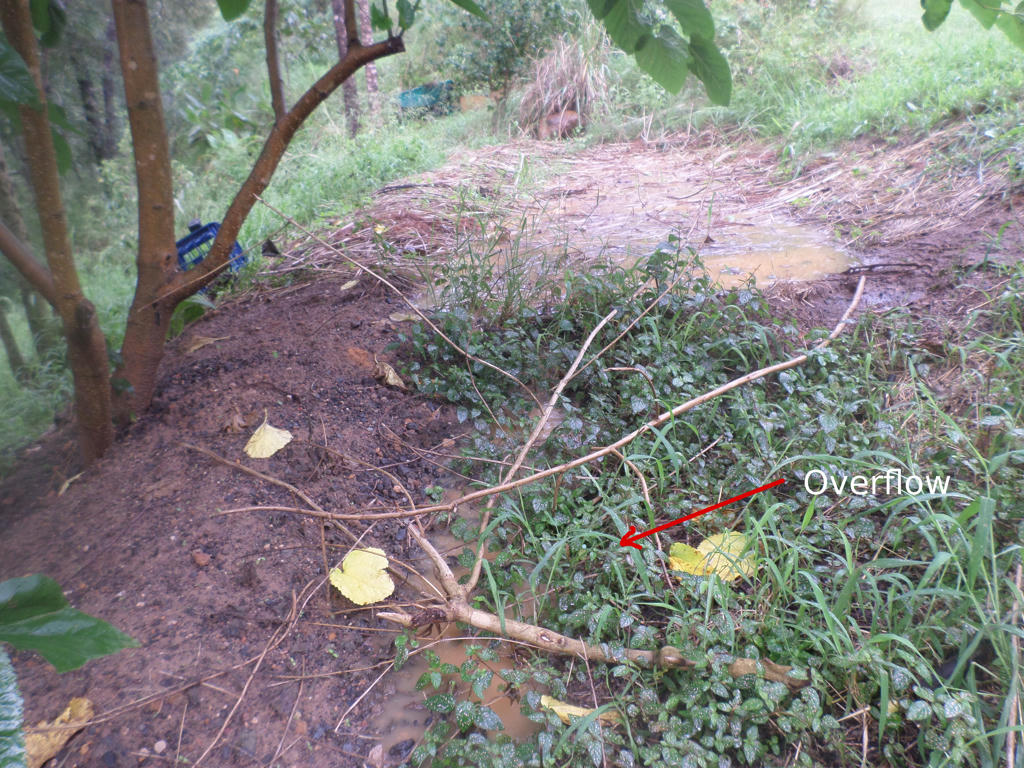
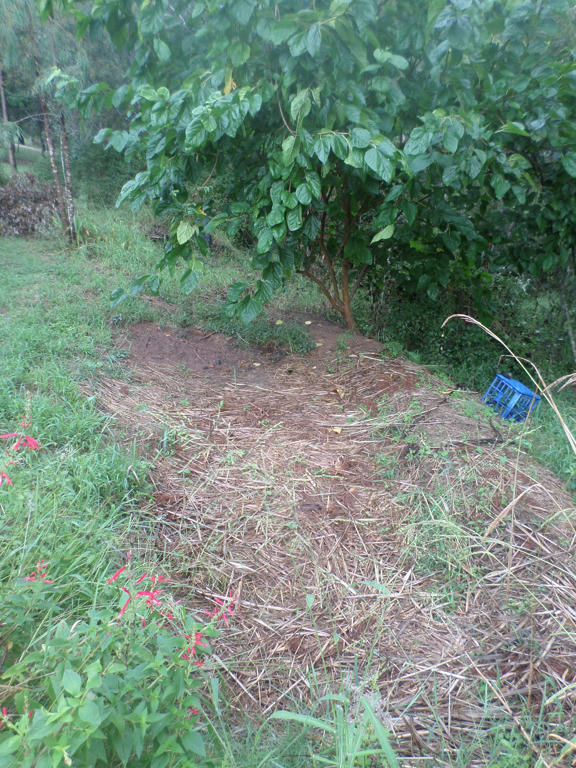

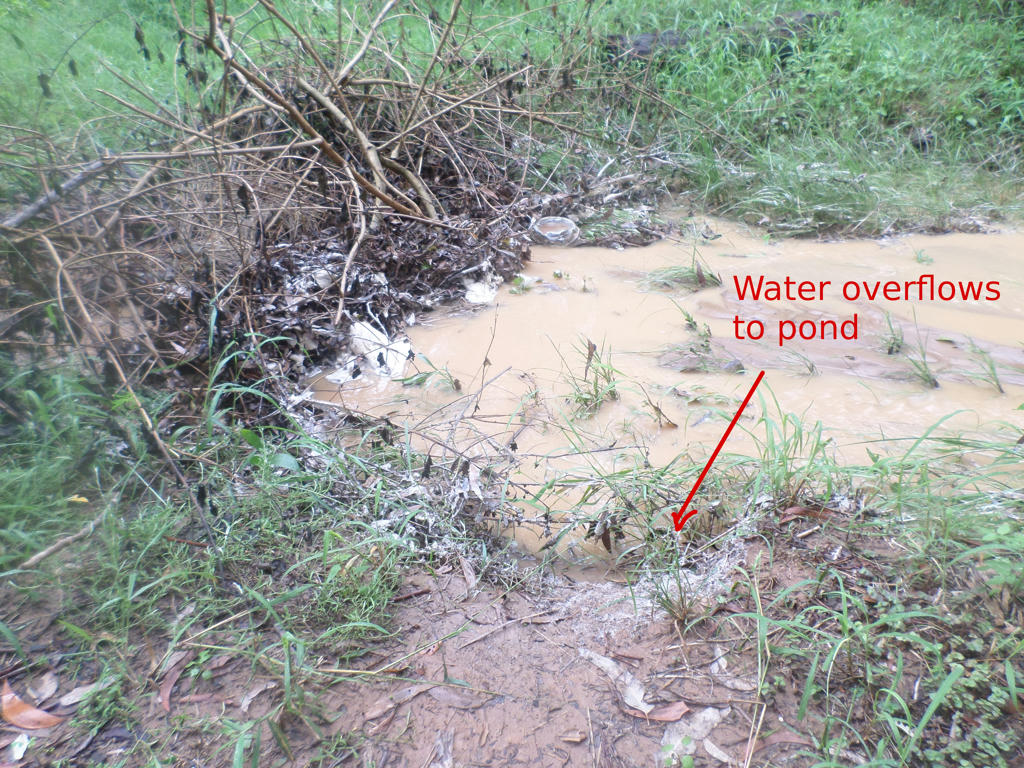
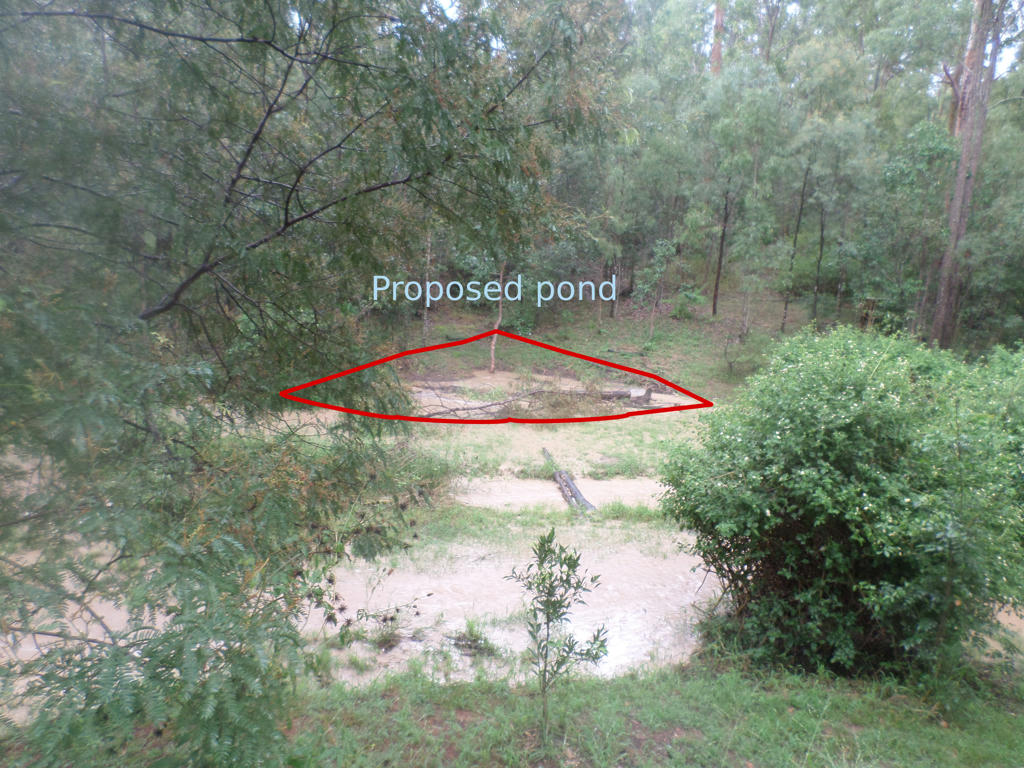
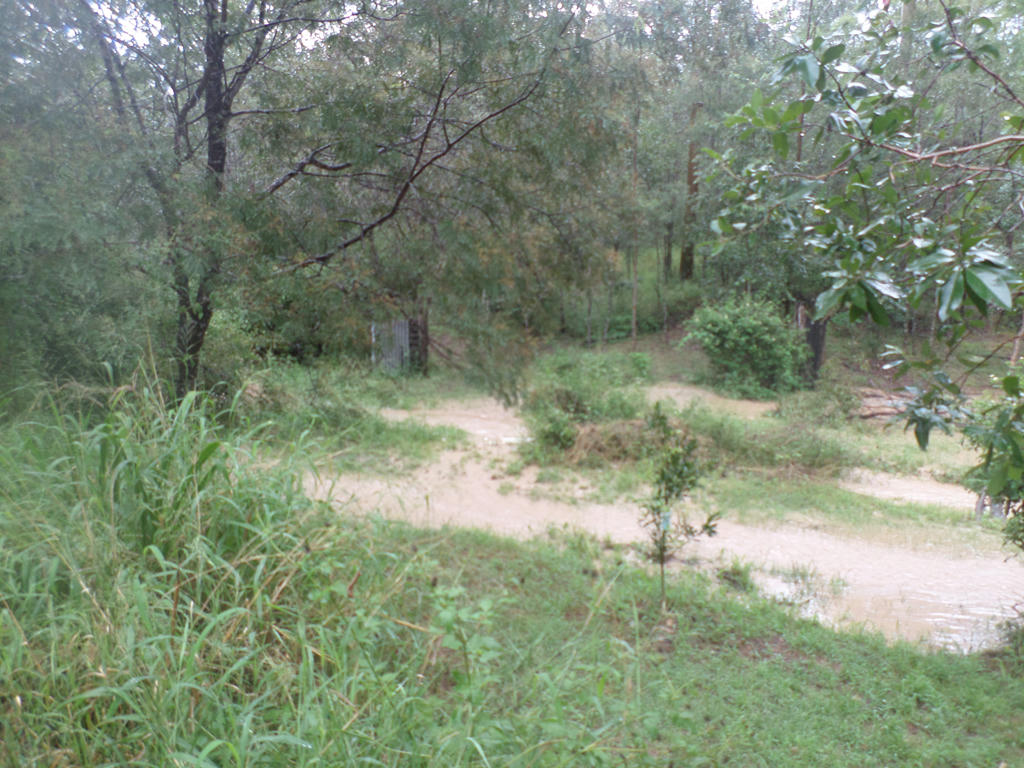
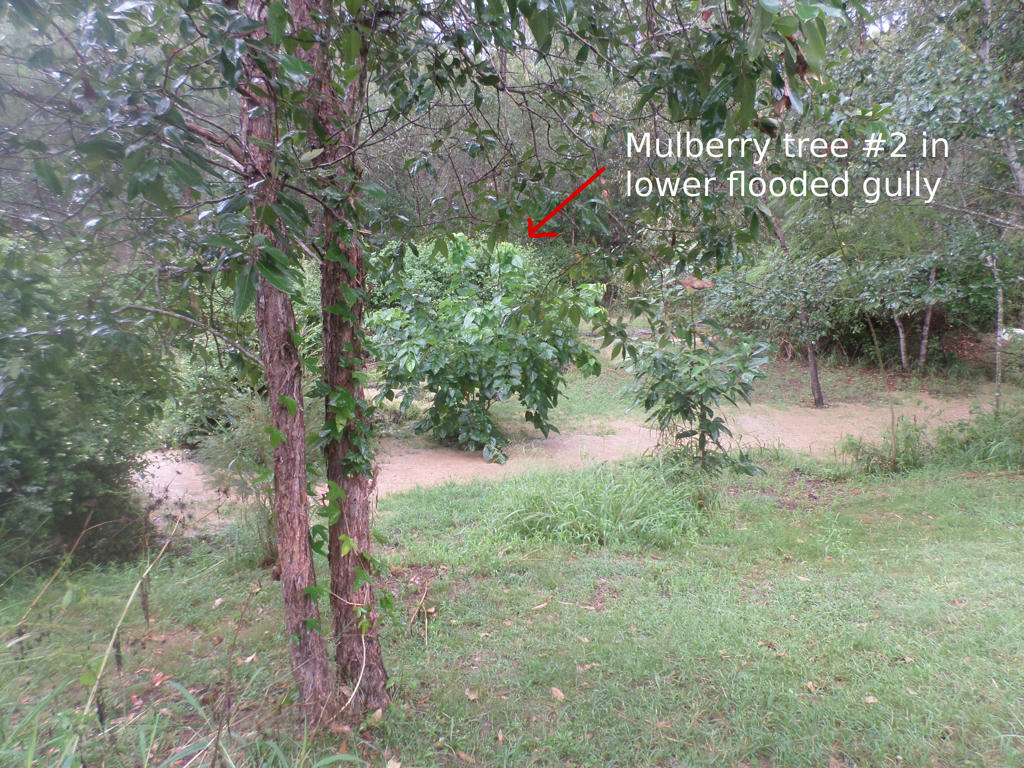
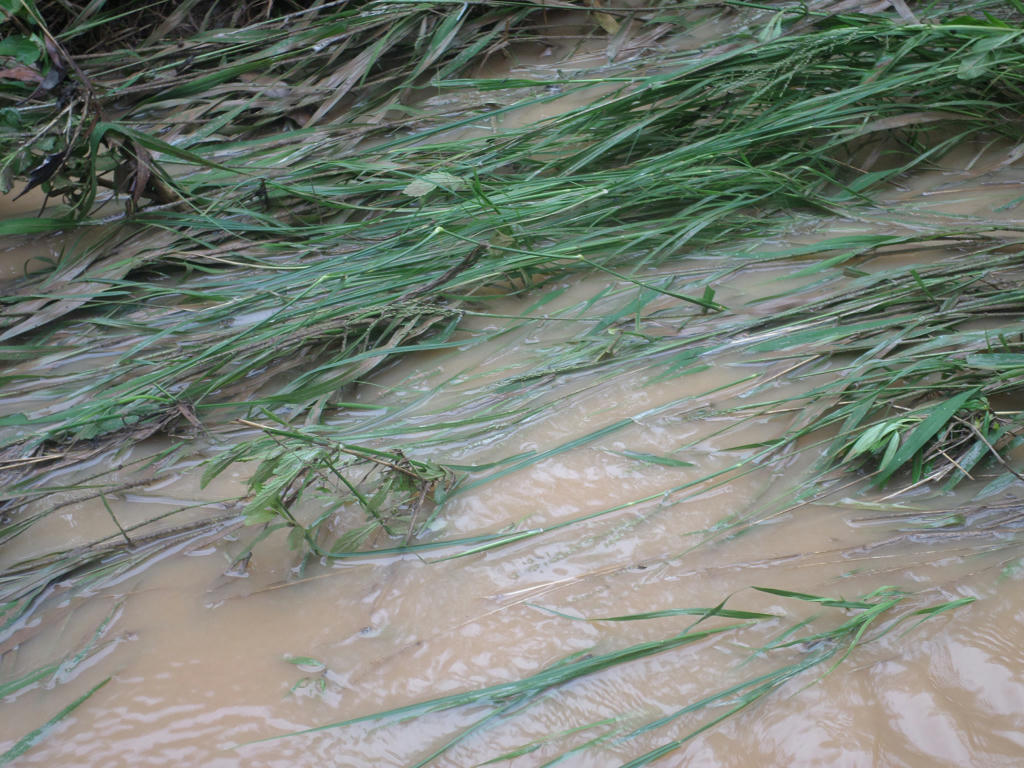
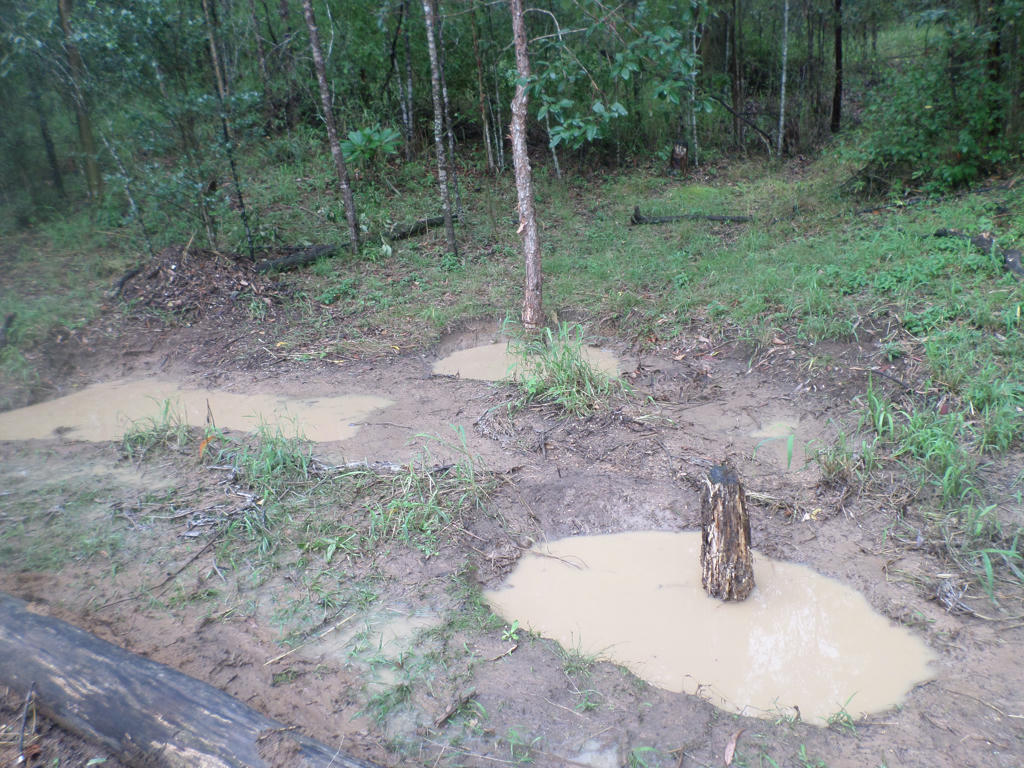
You obviously have bigger rain events than we do, but isn't it great to see the swales filling up with water? The first rain after I dug mine, I was down the back getting soaked, watching them fill up. Really satisfying to be able to hold up water and let it soak into the soil rather than end up next door. It looks like the new pool will do its job, too. Leaf mould will gradually rot down and seal it, but you might need to monitor it to see that it doesn't fill up with organic matter and turn into a wet meadow. I read an interesting article once about the way beaver dams gradually evolve into wet meadows and then turn back into land. The beavers meanwhile go and create a new dam elsewhere.
ReplyDeleteI love seeing the swales fill up, because I know how long between drinks the land has to endure here. I can understand your eagerness to check out your own handiwork too.
DeleteI read about beavers too recently, fascinating how they help shape the landscape. They're like natures mini loggers and pasture builders for the herbivores. :)
That is quite an accomplishment to have undergone. I knew you were digging swales but I have not realized how they worked on a larger scale. Once again, its not somethiing we need right now-I'd consider it if we are in drought.
ReplyDeleteYour extended thaw this year will help keep the moisture in the ground longer too. I often read northern hemisphere blogs and see some landscapes struggling with too much water. I sometimes wonder what must be worse - losing plants through extended dry, or extended wet periods? I guess both have their downsides and require different tactics. :)
DeleteWe are boggy through May sometimes but then it tends to be dry with occasional heavy rains. Each region will differ and we have been in droughts the last couple of years. The reason for the boggyness is that snow melts over frozen ground up here. Once the ground thaws our propert handles water very efficiently. It's taken me this long to understand the patterns. I've lived in severe drought too. I prefer what I have to that.
Delete